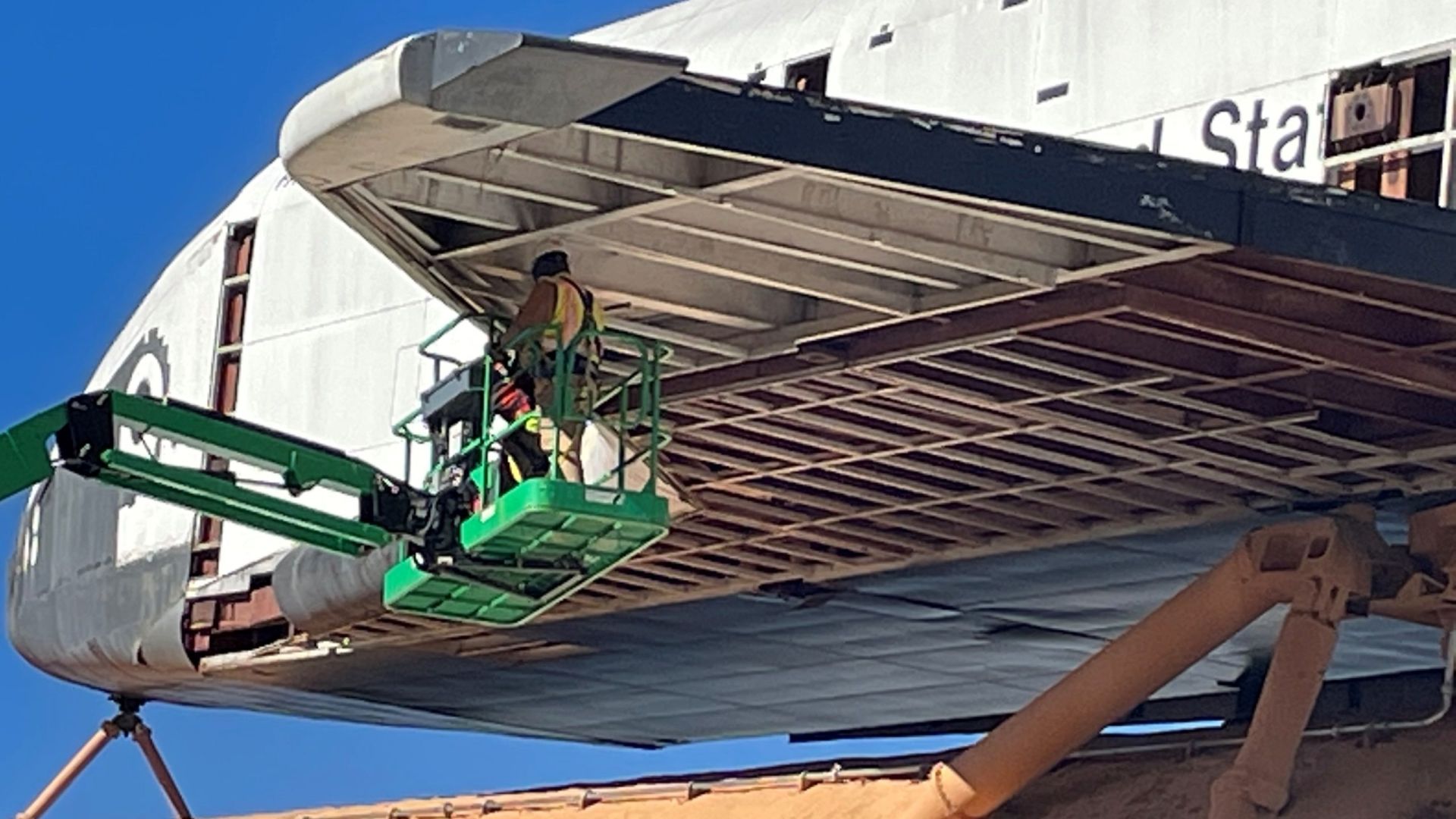Pathfinder – A Special Inspiration
Since 1988, the Pathfinder shuttle stack has been part of Huntsville’s “spaceline.” The shuttle stack was the first major addition to the Center’s outdoor exhibition since the museum opened in 1970. Pathfinder was a big, visible commitment to the Center’s mission: To showcase the contributions of NASA’s George C. Marshall Space Flight Center and to give the public a chance to see not only the history of the space program, but the current and future technology of America’s civilian space agency. Pathfinder was also a great reflection of what Space Camp trainees were learning during their time in the program.
As iconic as Pathfinder is to the Center and to Huntsville, many often overlook or misunderstand its importance to NASA’s Space Shuttle program. In my 19 years at the Center, I overheard guests describe it as everything from, “It’s just a model,” to “It’s the first shuttle ever flown.” Pathfinder was not meant to fly in space. But each of the stack’s major elements played an important role in the success of NASA’s Space Shuttle program.
The large orange External Tank is the grandfather of them all. It was the first ever made and was instrumental in qualifying the tanks for flight. It fueled the tests at the Stennis Space Center in Mississippi, proving the Space Shuttle Main Engines were flight capable. Most External Tanks were filled with oxygen and hydrogen a handful of times or less. This tank was filled and drained hundreds of times.
The white Solid Rocket Boosters are a pair of experimental, fiber-wound composite boosters designed for launching shuttles from Vandenberg Air Force Base. Extremely lightweight compared to the original design, they would allow shuttles to gain a much-needed performance boost to fly into a polar orbit. Those missions were never flown, as that booster program was cancelled after the 1986 Challenger tragedy. This booster design, however, contributed to flight safety. The segment joint design was adapted for use in the improved return-to-flight booster design. Finally, parts of the top end of the boosters were taken from the stack by NASA for flight use in 1999 and were replaced with fiberglass replicas.
Next are the three RS-25 engines on the back of the Orbiter. Known as Space Shuttle Main Engines, or SSMEs, these examples are only nozzles and not full engines with turbopumps, computers, etc. But they do pose an interesting mystery! Two of the engine nozzles lack identifying marks. The third, in the bottom right corner of the three-engine triangle, has marks identifying it as “SN-2006.” If our research pans out, this means the nozzle flew on the first five Space Shuttle missions. As for the two unidentified nozzles, we hope to conduct a more in-depth inspection in the near future to help identify them.
Finally, the most iconic part of the stack: The Orbiter. It was built as a facilities checkout mock-up and was not assigned a name at the time. It also looked a little different than it does now. Built out of wood, steel and iron, it was simpler, faceted and looked like something from an early 1980s video game. Of all the components in Shuttle Park, it may have had the most interesting life. The Orbiter was designed to be the same length, width, height, and weight as the flight-capable vehicles. It even had an adjustable center of gravity that could mimic that of the real Orbiters during various stages of flight. It was built at Marshall Space Flight Center in Huntsville, and as part of its duties was loaded into the Apollo-era Dynamic Test Stand. It also travelled to Kennedy Space Center in Florida where it was put into the lifting equipment in the Vehicle Assembly Building, and tested in the specialized crane that loaded the Orbiters onto and off the Shuttle Carrier Aircraft. It was even used in training the crews that emptied leftover maneuvering fuel from the Orbiters after landing. Once it had proved that the flight Orbiters could be handled by all the necessary equipment, passed through all the necessary doors, and travel down all the required roads without damage, the mockup was retired from program use.
But that’s not the end of the story! In 1983, the Orbiter was modified to make it look more like a flight vehicle by adding plywood and fiberglass elements on top of the original mockup. This was also when it was given the name Pathfinder, in honor of its role in the program. Sponsored by the America-Japan Society, it was on public view in Tokyo, Japan in 1983 and 1984. In addition to being modified to look like the real Orbiters, it was also changed to accommodate disassembly, packing, and shipping. After retiring from its overseas tour, plans began for incorporating it into a display it at the U.S. Space & Rocket Center. It was destined to become part of the world’s only launch configuration (full stack) shuttle display. In May of 1988 Pathfinder was placed on top of the External Tank in Shuttle Park.
For over 30 years, Pathfinder has endured winds, rain, and sun while helping teach the public about the Space Shuttle program. Unfortunately, the elements have taken their toll on the plywood and fiberglass shells on the Orbiter. It wasn’t really built for long-term outdoor display. As a result, the Center has made the difficult decision to begin in-depth inspections and repair of Pathfinder. As the project moves forward, old and failing materials will be removed and more of the original test article will be visible again for the first time in at least 32 years. As the project moves forward it may look messy, but it’s all part of necessary steps to make sure that Pathfinder will continue to inspire generations to come!
